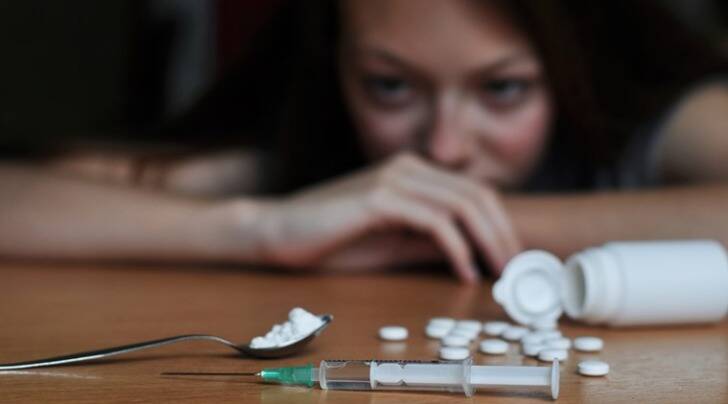Unlocking Hope for Those With Addictions
Addiction is a relentless adversary, affecting millions of lives across the globe. It doesn’t discriminate; it can touch anyone, regardless of age, gender, or social status.
The grip of this affliction can be overpowering. But there’s hope.
Addiction in the United States
In 2017, an estimated 19.7 million American adults, aged 12 and above, grappled with the challenges of a substance use disorder, as reported by the National Survey on Drug Use and Health (NSDUH).
A significant portion of this population, nearly 74 percent, battled an alcohol use disorder, while roughly 38 percent contended with an illicit drug use disorder. The complexity of addiction became evident in 2017 when one out of every eight adults faced the dual struggle of both alcohol and drug use disorders simultaneously.
Furthermore, a staggering 8.5 million American adults experienced the burden of co-occurring disorders, grappling with both a mental health disorder and a substance use disorder.
These statistics underscore the profound impact of addiction on individuals and society as a whole, with drug abuse and addiction exacting an annual toll of over $740 billion in lost workplace productivity, healthcare expenses, and crime-related costs.
What Causes Addiction?
The intricate nature of addiction involves various contributing factors. Genetics, encompassing the interplay between one’s genes and their environment, play a substantial role, accounting for approximately 40 to 60 percent of an individual’s susceptibility to addiction.
Environmental factors further shape this risk, with elements such as a tumultuous home environment, exposure to abuse, parental drug use, peer influences, community attitudes towards drugs, and poor academic achievement all potentially increasing the likelihood of addiction.
Notably, teenagers and individuals with mental health disorders are especially vulnerable to the allure of drug use and addiction, underscoring the need for targeted prevention and support efforts within these demographics.
Statistics on Addiction Treatment
In 2017, approximately 20.7 million individuals aged 12 and older required treatment for substance use disorders, yet only 4 million of them, roughly 19 percent, received the necessary assistance. Surprisingly, of the 18 million people who needed treatment but did not seek it, merely 5.7 percent acknowledged their need for help.
On a more encouraging note, Alcoholics Anonymous (AA) boasts a global presence with over 120,000 groups spanning 175 countries and an impressive membership exceeding 2 million.
The United States houses over 14,500 specialized substance abuse treatment facilities, offering a spectrum of care options, such as counseling, behavioral therapy, medication, case management, and more.
While it’s true that the relapse rate for substance use disorders hovers between 40 and 60 percent, akin to relapse rates for chronic conditions like hypertension or asthma, addiction is viewed as a highly treatable ailment.
In fact, roughly 10 percent of American adults aged 18 and above proudly proclaim themselves to be in recovery from alcohol or drug abuse issues, demonstrating that the path to recovery is, indeed, attainable.
The Power of Addiction Treatment Centers
Addiction treatment centers are sanctuaries of recovery. They offer comprehensive programs that address the multifaceted nature of addiction. Here’s how they can change lives:
1. Holistic Assessment and Tailored Plans
The journey towards recovery begins with a thorough assessment. Understanding the unique triggers, underlying mental health issues, and personal history of each individual is crucial. This information enables dedicated professionals to create a personalized treatment plan, ensuring that every aspect of the individual’s addiction is addressed.
2. Detoxification: A Safe Start
For many, addiction begins with physical dependence. Addiction treatment centers provide a safe environment for detoxification. Medical professionals are on hand to manage withdrawal symptoms, making the process as comfortable as possible. This critical first step paves the way for the emotional and psychological healing that follows.
3. Therapeutic Interventions: Healing from Within
Addiction often masks deeper emotional and psychological pain. Treatment centers employ a variety of therapeutic interventions, such as cognitive-behavioral therapy, group therapy, and counseling to unearth these underlying issues. By addressing the root causes, individuals can learn healthier coping mechanisms and strategies to prevent relapse.
4. Supportive Community
One of the most significant advantages of addiction treatment centers is the sense of community they offer. Individuals battling addiction often feel isolated and alone. Treatment centers provide a supportive environment where they can connect with others facing similar challenges, fostering a sense of belonging and understanding.
The Importance of Professional Guidance
Addiction is a formidable adversary, and attempting to conquer it alone is a daunting task. Here’s why professional guidance is indispensable:
1. Expertise: Addiction treatment centers are staffed with experienced professionals who specialize in addiction recovery. Their expertise ensures that individuals receive the best possible care and guidance throughout their journey to sobriety.
2. Accountability: Recovery is a process, and setbacks can occur. Addiction treatment centers offer a structured environment that holds individuals accountable for their progress. This accountability is crucial in preventing relapse and maintaining long-term sobriety.
3. Dual-Diagnosis Treatment: Many individuals struggling with addiction also have underlying mental health issues. Addiction treatment centers are equipped to provide dual-diagnosis treatment, addressing both addiction and mental health concerns concurrently.
Recovery is not merely about quitting a harmful behavior; it’s about rediscovering life’s beauty and purpose. Addiction treatment centers empower individuals to build a brighter future. Through skill-building, relapse prevention strategies, and ongoing support, they prepare individuals to reintegrate into society as healthier, happier individuals.
The Ripple Effect of Recovery
When an individual seeks help at an addiction treatment center, the impact extends far beyond his or her own life. Family members, friends, and loved ones are also profoundly affected. Recovery creates a ripple effect of positivity, mending broken relationships and restoring hope.
Conclusion
Addiction is a formidable foe, but it is not invincible. Addiction treatment centers stand as beacons of hope, guiding individuals towards the path of recovery. They offer comprehensive programs, expert guidance, and a supportive community that empowers individuals to overcome addiction’s grip.



